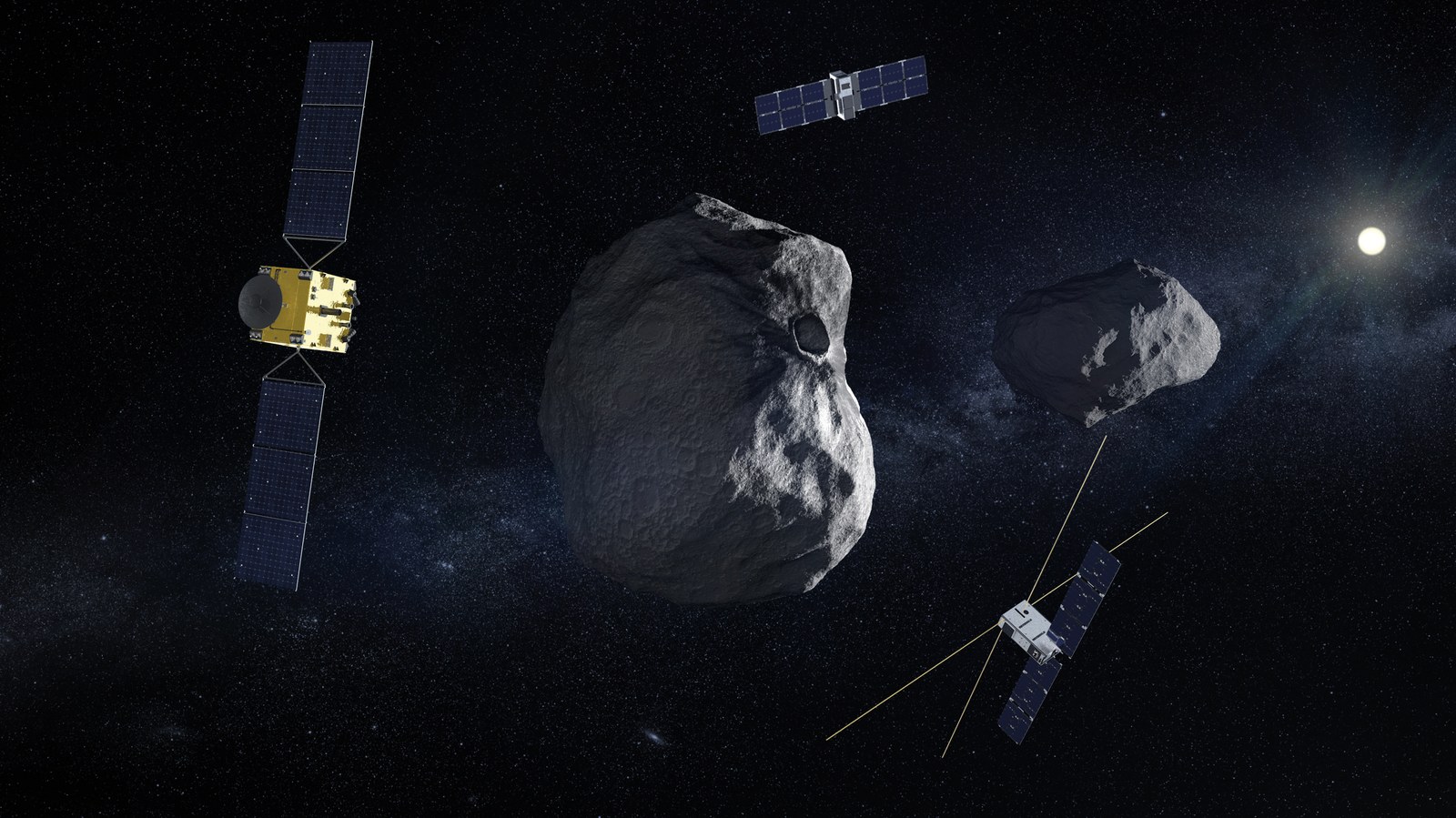Hera

Hera is the European component of the Asteroid Impact Deflection Assessment project (AIDA), a joint effort between ESA and NASA. The project intends to demonstrate the feasibility of modifying the orbit of an asteroid with a kinetic impactor. NASA has launched the DART projectile in July 2021, and successfully impacted asteroid Dimorphos on 26 September 2022. To complete the experiment, ESA will launch the Hera exploration spacecraft and two cubesats in 2024. Hera will reach the Didymos-Dimorphos system in 2026 and remain there for at least 6 months to fully characterise both asteroids.
We expect the mission to bring significant discoveries in asteroid science as many investigations will be the first of their kind: first mission to fully characterise a binary asteroid system, smallest asteroid ever visited, first exploration of an object close to its rotational disruption spin limit, first tomography of an asteroid, and first analysis of cratering physics on an asteroid in the hypervelocity regime. Binary systems like Didymos amount to 15% of all near-Earth objects, and are also well represented in the Main Belt and Kuiper Belt. Despite this, very little is known about their formation and evolution. Hera will provide unprecedented data to address these issues.
PF is involved in the mission as camera PI and co-lead of the Data Analysis working group. The camera is developed by Jena-Optronik GmbH and operated by ESA according to our recommendations. PF is responsible for planning of scientific observations, in-flight calibration, creation of high-level products such as shape models and maps, as well as the scientific analysis. We utilise thereby the expertise and leadership developed from previous projects such as Rosetta, Dawn, and Hayabusa2.
Scientific Participation of the DLR Institute of Planetary Research
- AFC (Asteroid Framing Cameras)
PI: Jean-Baptiste Vincent - Specific interest and expertise with PALT (Laser Altimeter) and TIRI (Thermal InfraRed Imager)
- Data Analysis Working Group, with access to data from all instruments
